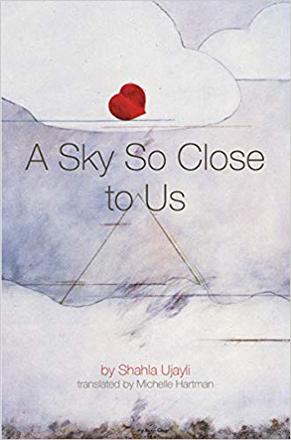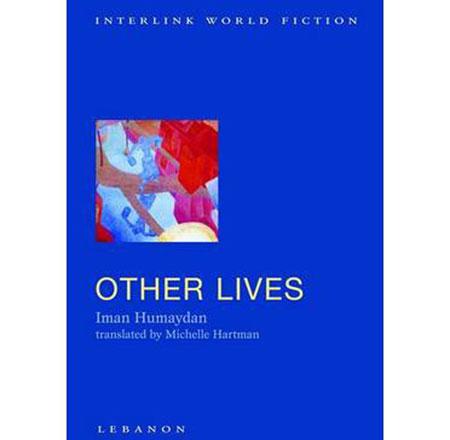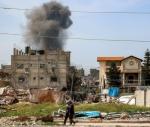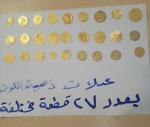You are here
Syria: Raqqa and beyond…
By Sally Bland - Dec 23,2018 - Last updated at Dec 24,2018

A Sky So Close to Us
Shahla Ujayli
Translated by Michelle Hartman
US: Interlink, 2019, 303 pp.
This is a novel that was shortlisted for the 2016 International Prize for Arabic Fiction, but it has the feel of a memoir.
This is partly because it includes snatches of real history from the early days of Syria’s independence until the present war, as well as the Palestinian Nakba and more. Yet, the ultimate focus is on the personal stories of those living in these tumultuous times, first and foremost from the protagonist and narrator, Joumane Badran, a Syrian woman in her 30s.
The author, Shahla Ujayli, who currently teaches Modern Arabic Literature at the University of Aleppo and the American University in Madaba, perhaps chose this memoir-like style to give the novel an intimate tone to reveal the hidden side of the book’s themes of love, family, nostalgia, illness, war and displacement.
The somewhat rambling style and frequent transitions in time and place occasionally make the story hard to follow, but they do serve to enhance its emotional impact and graphically convey the themes of war and displacement.
In beautifully flowing prose filled with original imagery, Ujayli records experiences and feelings that are surely shared by many other Syrians and citizens of the surrounding countries, especially in these years while the cruel war has rages on.
“This was a war where no one had rights. There were no treaties, no conventions concerning prisoners, women and children. All values were suspended”. (p. 278)
Lovely descriptions of Aleppo and Damascus in the late 1940s are matched by Joumane’s childhood memories of growing up in Raqqa, thus restoring a positive image to the city which had the misfortune to serve as Daesh’s headquarters in Syria.
The passages on Raqqa are quite unique, at least among Syrian novels that have been translated to English, few venture into the eastern desert, despite its crucial importance to Syria as a whole. Ujayli gracefully makes up for this omission with Joumane’s telling about her US-educated father who “signed on to work as an engineer on the Middle and Lower Euphrates projects, the latter of which ended in the village of Tabqa, 40 kilometres to the west, where they built a dam. The dam was a dream that would illuminate the furthest village in Syria with electric light, not to mention the resulting development,” (p. 58)
Though the novel opens in Aleppo in 1947, most of the narrative actually unfolds in today’s Jordan post-2011. Joumane is living in Amman and working for an NGO helping refugees. In some ways, her life proceeds normally, but like all who have escaped a war zone and left loved ones behind, she agonises over any piece of bad news from Syria, worrying how her father and sisters in Raqqa are faring and sometimes being unable to reach them.
Quite by chance, she meets Nasser Al Amireh, a climate expert, as they return to Amman on the same plane. As a Palestinian, he represents a different variety of refugee than the fellow Syrians she meets in Zaatari. As he says, “My origins are in one place, I grew up in another, my life is scattered between many different places.” (p. 81). An immediate rapport springs up between the two, as they discover they both have grandparents from Aleppo: “Through our conversations, Nasser and I began to create a special little history that we nurtured amidst the grief gripping the world around us. We built a house of words.” (p. 79). At first this is simply a pleasurable affair, a distraction, but after Joumane is diagnosed with cancer, Nasser becomes an irreplaceable source of support.
Joumane’s telling of her battle with cancer is direct, poignant and devoid of platitudes. Her panic is palpable, yet, a strong character even as she feels at her weakest, Joumane turns her treatment into a learning experience, making new friends and gaining new insights. The story poses many questions without answering them directly: Can different kinds of pain be ranked? How do the pains of disease and of war and separation interact? What are the psychological repercussions of pain and fear?
The novel dissects many of today’s global problems as they have played out in the Syrian war, such as what it means to be a refugee and the hypocrisy involved in the aid game. As Joumane quickly realises, some “countries were supplying the camp with aid while they were the ones who played a major role in displacing them to begin with, only to reassemble them later, plastering the refugee label on them”, (p. 102).
Though concentrated in Syria, Jordan and Palestine, the story also has interludes in many cities of Europe, Asia and the US. As Michelle Hartman writes this “demonstrates how Ujayli plays with the reader’s expectations in order to destabilise them and create the unexpected in her novel”, (p. 300). At the same time, she pays tribute to the human spirit which strives not only to survive but to love and create beauty.
Related Articles
In “Summer with the Enemy”, the characters are paramount. None of them are typical, much less fit into any stereotype; each opens up a different world of perception. The author, Shahla Ujayli, dedicates her book to “the Raqqa of my memory”, and her characters’ personalities, each one uniquely moulded, are her main vehicle for recreating the city as it was in the 1980s — seemingly isolated but actually with many ties to the outside world.
Returning to her native country, Lebanon, after fifteen years spent in Australia and Kenya, gives Mariam final proof of her state of displacement and transience — always being on the verge of leaving (symbolised by thirteen suitcases kept on the ready in her Mombasa home).
The Weight of ParadiseIman HumaydanTranslated by Michelle HartmanMassachusetts: Interlink Books, 2016Pp.


















